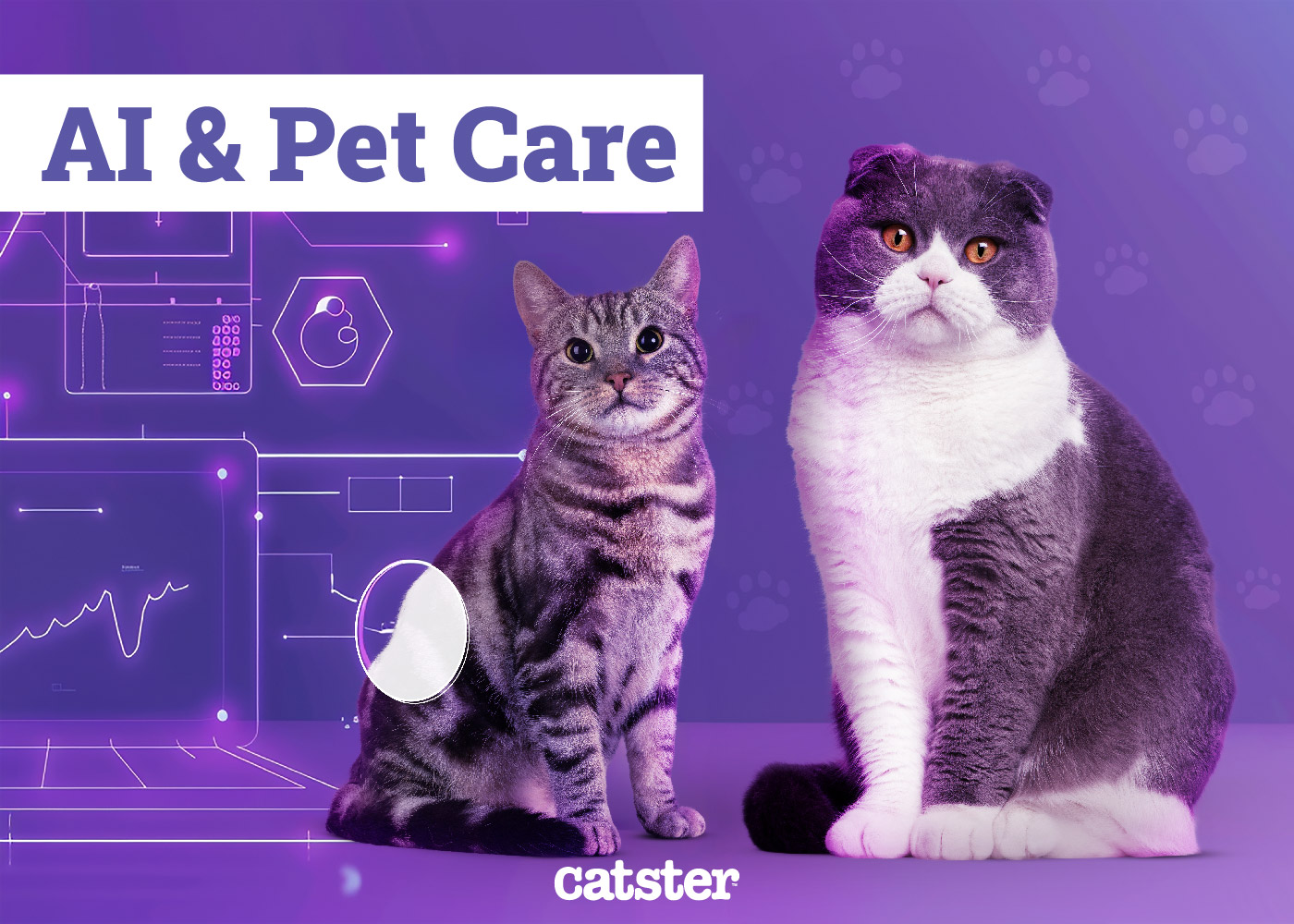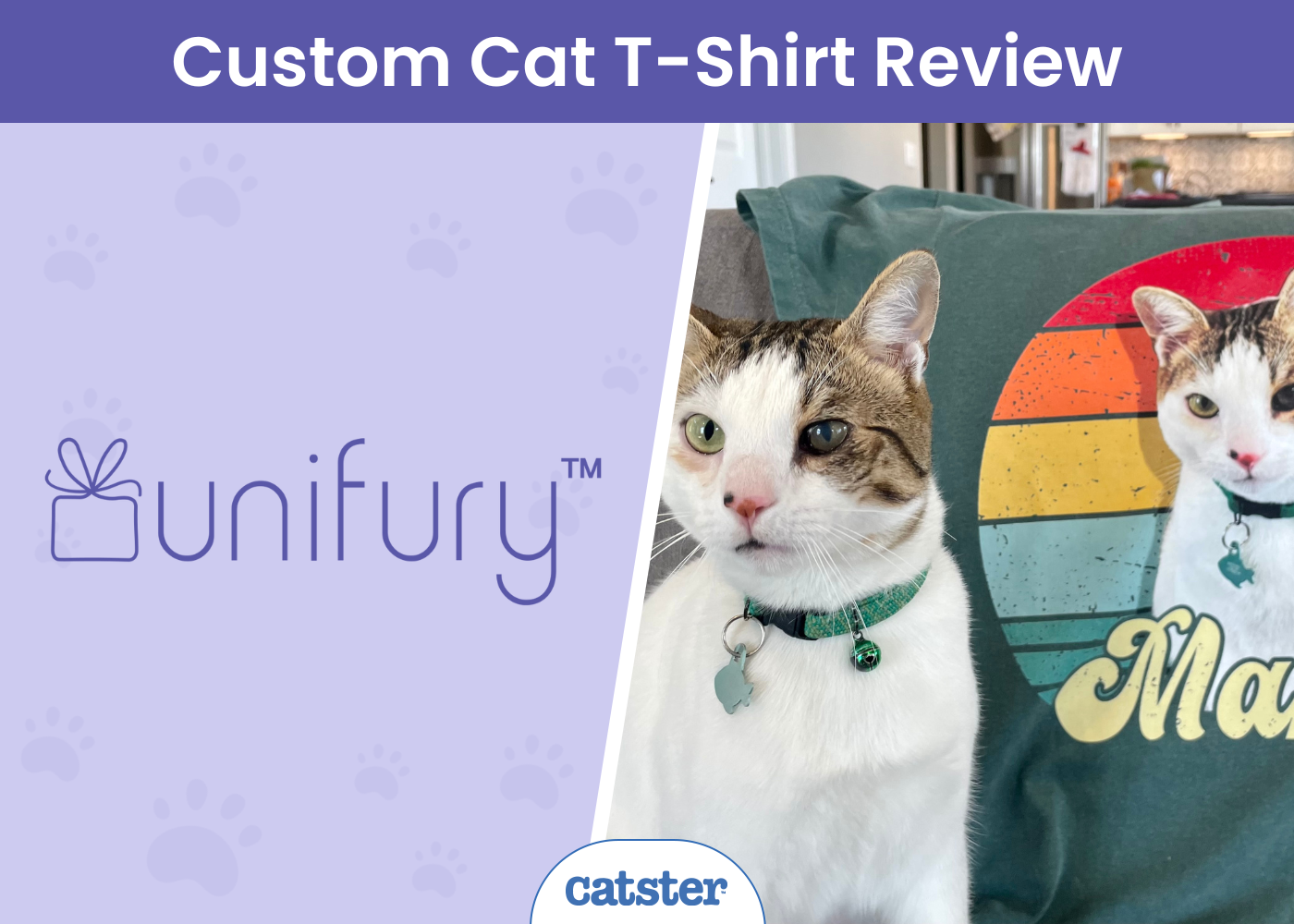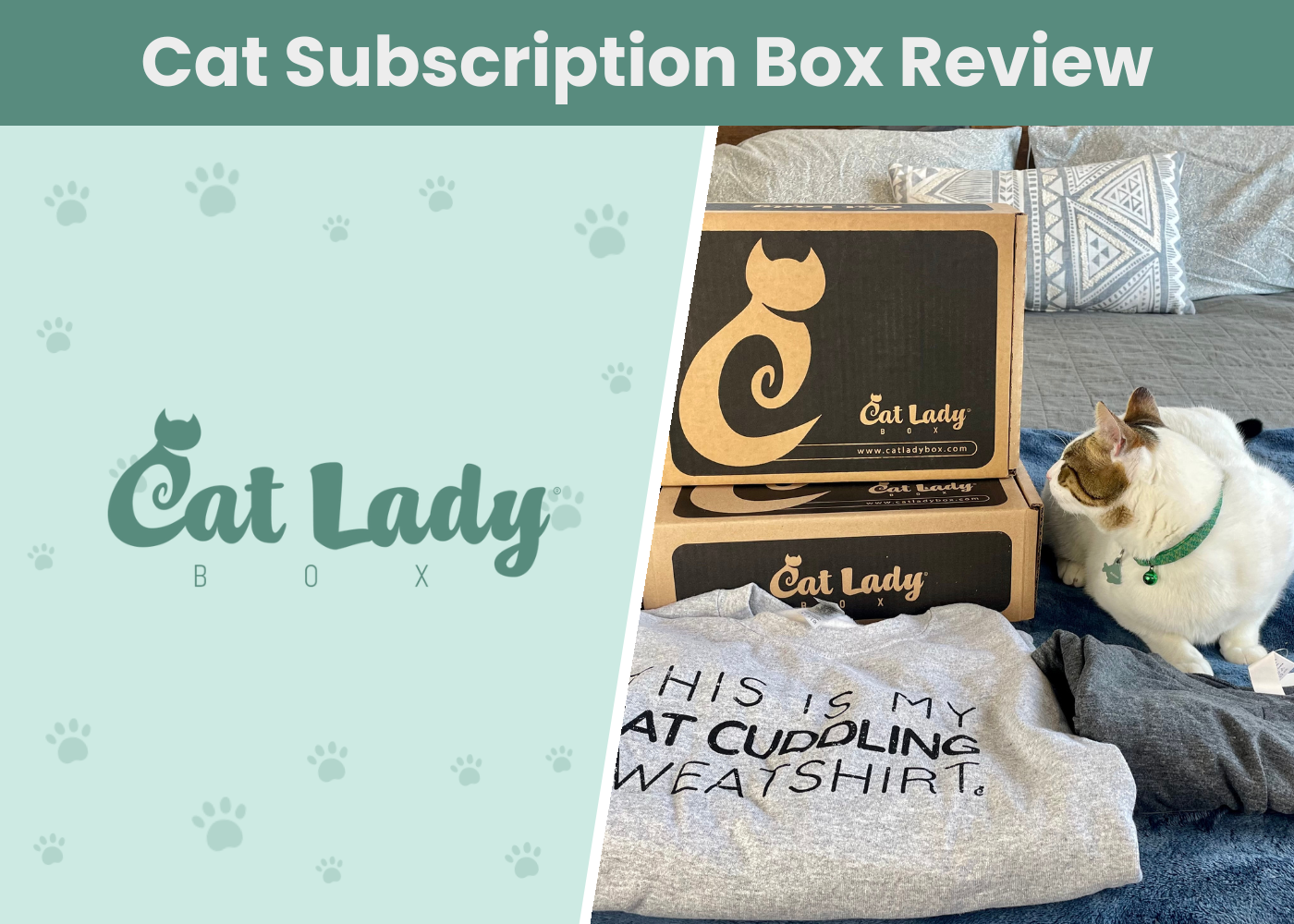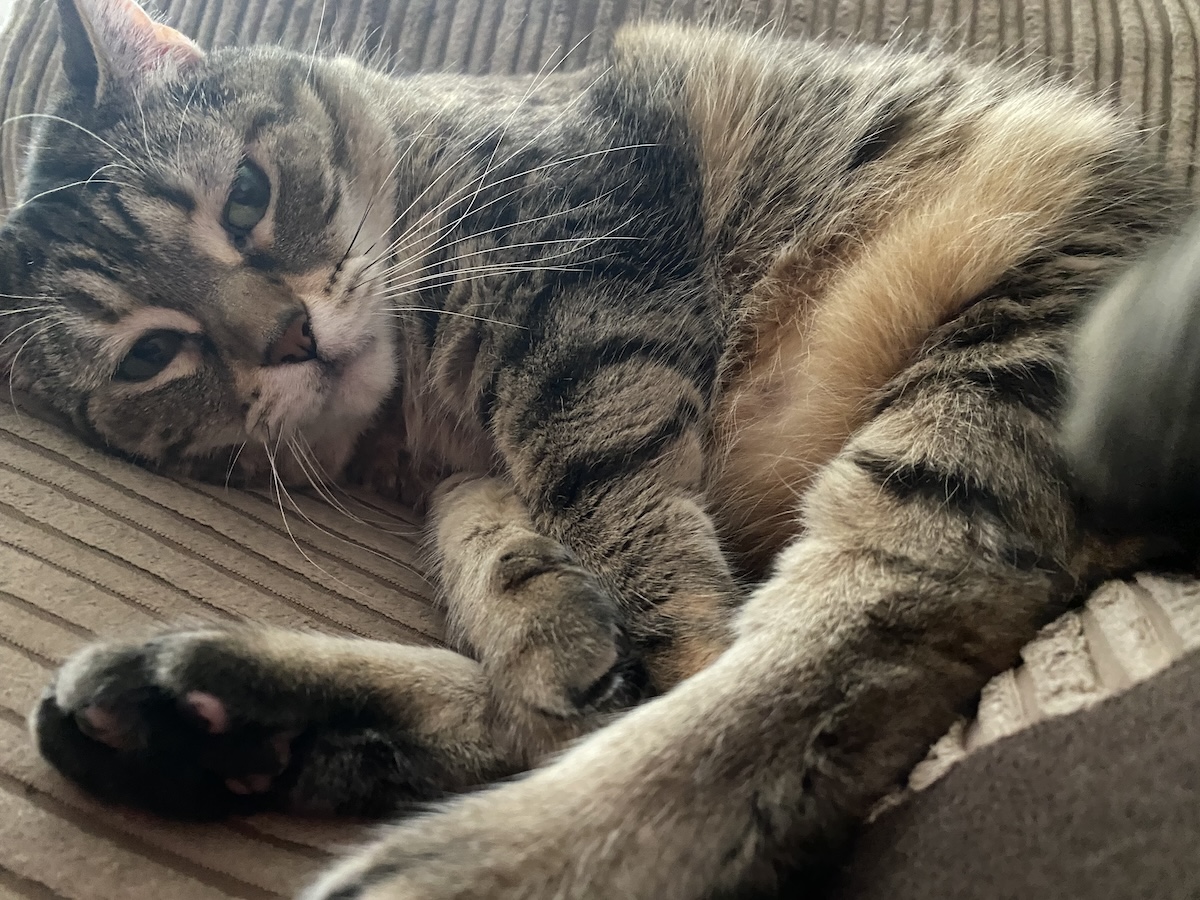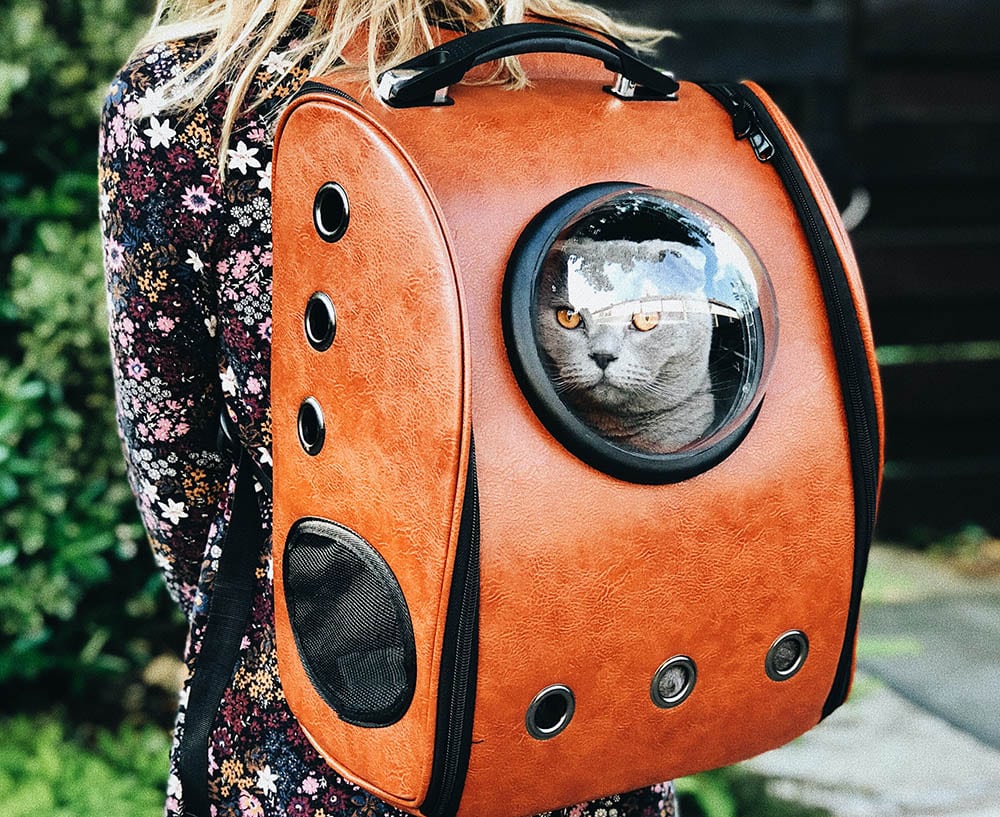
The size of the carrier also matters. If you give a cat too much space, they are more likely to bang against the sides and cause injuries, but if you don’t provide enough room, they will be uncomfortable and may refuse to get in.
When taking your cat on a plane, you must choose the best airline-approved cat carrier to ensure it meets sizing guidelines while being secure and safe.
Fortunately, several options are available, including wicker baskets and space capsule designs. To help you find the best cat carrier in the UK, we have reviews of 10 of the best below and a guide to help you determine the ideal model for your cat.
A Quick Glance at Our Favourites in 2024
| Image | Product | Details | ||
|---|---|---|---|---|
| Best Overall |
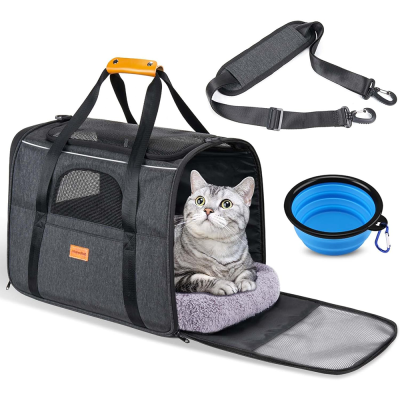
|
Morpilot Pet Carrier Bag |
|
CHECK PRICE |
| Best Value |
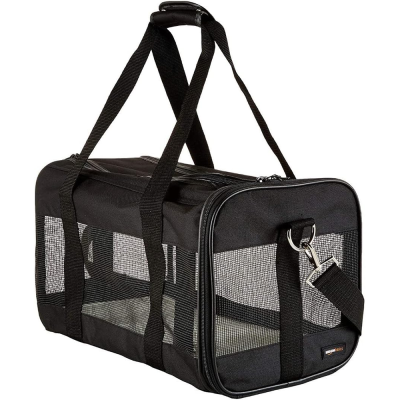
|
Amazon Basics Pet Carrier Bag |
|
CHECK PRICE |
| Premium Choice |
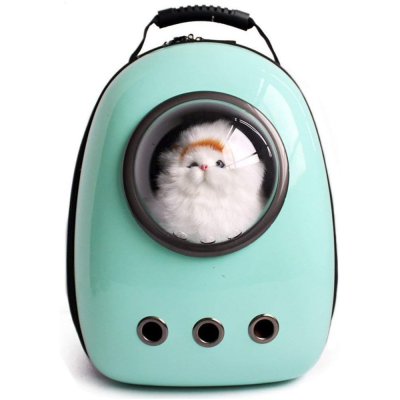
|
Lemonda Portable Pet Travel Carrier Space Capsule |
|
CHECK PRICE |
| Best for Kittens |
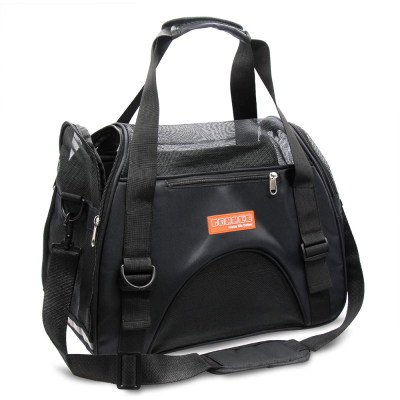
|
DentJet Pet Travel Carrier |
|
CHECK PRICE |
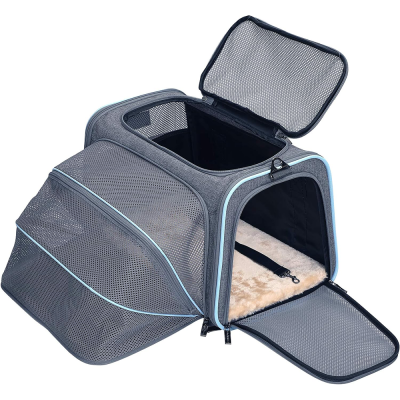
|
Petsfit Cat Carrier Large Expandable Cat Carrier |
|
CHECK PRICE |
The 10 Best Cat Carriers in the UK
1. Morpilot Pet Carrier Bag – Best Overall
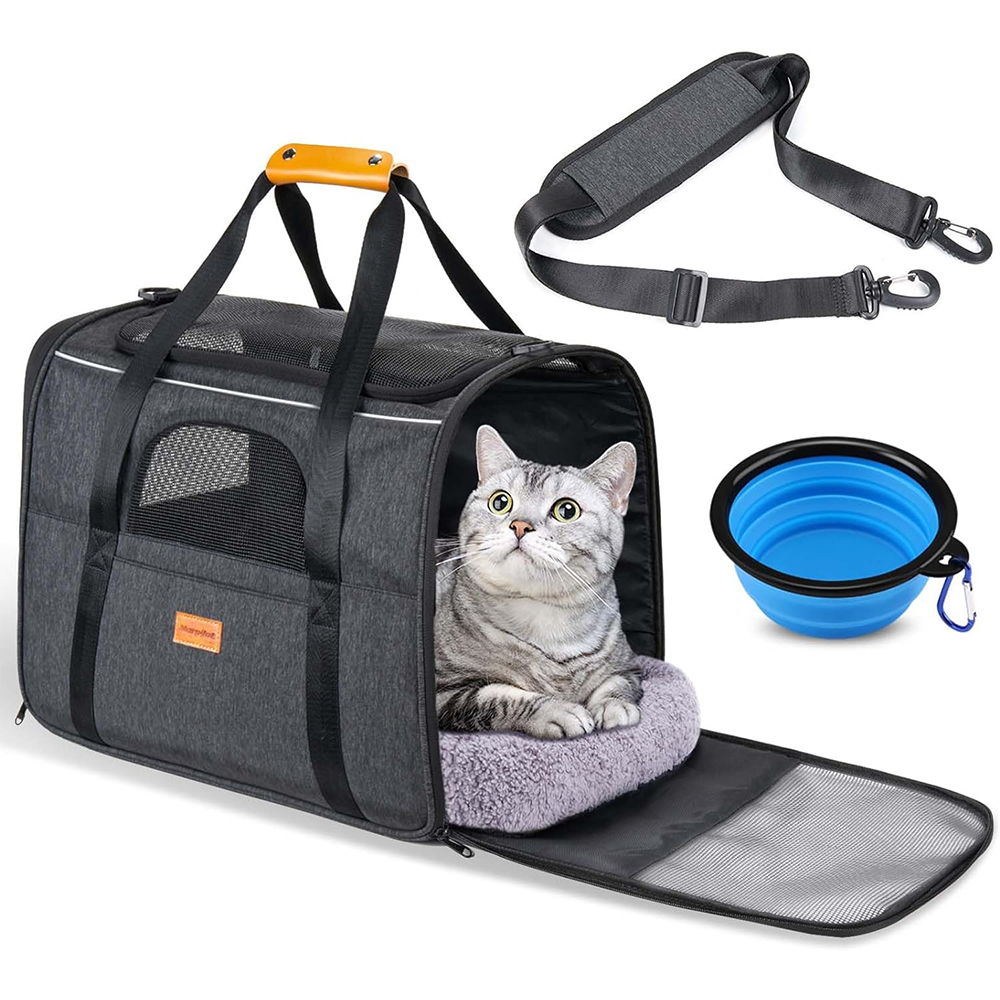
| Carrier type: | Bag |
| Material: | Polyester |
| Dimensions: | 30 cm x 7.6 cm x 43 cm |
| Airline approved? | Yes |
The Morpilot Pet Carrier Bag is classed as a medium-sized soft carrier bag. It has a firm bottom and soft sides with breathable mesh panels on the top and sides. You can use the top or front panel as the entrance, depending on what you find easier, and the bag can be slung over the shoulder and comes with a shoulder carrying strap.
Shoulder carrying is especially beneficial if you have to walk to the vet because it makes it easier to carry the load. The carrier also comes with a removable and washable cushioned base and a folding water and food bowl, which is helpful for longer trips.
Priced reasonably, this bag is sized for smaller adult cats and kittens. Including a cushion and base is a nice touch, and the bag looks attractive, making it our choice as the overall best cat carrier in the UK and the best airline-approved cat carrier.
However, you might struggle to get larger cats in it, but there is a larger bag available, too. The mesh also won’t withstand cat claws, so if your cat tends to dry and scratch their way out of a difficult situation, you may need a rigid model instead.
- Can be carried over the shoulder
- Includes a removable cushioned base and a travel bowl
- Airline approved
- Too small for large cats
- Mesh panels aren’t claw-proof
2. Amazon Basics Pet Carrier Bag– Best Value
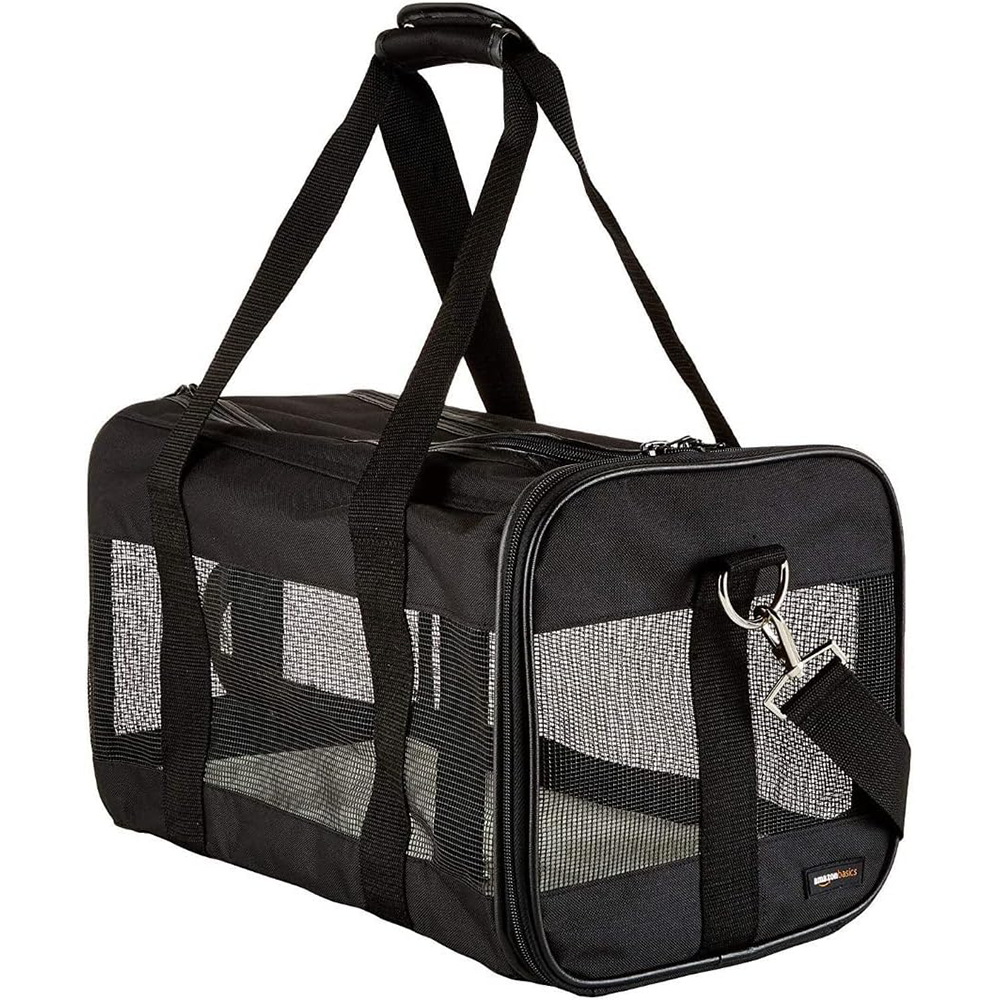
| Carrier type: | Bag |
| Material: | Polyester, Fleece |
| Dimensions: | 41.9 cm x 23.9 cm x 24.9 cm |
| Airline approved? | Most |
The best cat carrier in the UK for the money is the Amazon Basics Pet Carrier Bag. This soft bag is made from polyester and has a fleece-lined base. It comes with standard carrying handles so you can carry it by hand and also includes an adjustable shoulder strap to ease the load.
Its dimensions and 16-pound weight capacity make it suitable for all but the biggest cats, but there are different sizes. The carrier has mesh panels around the bag, giving your cat plenty of fresh air and allowing them to see out. It is very reasonably priced, especially for a bag of this size, and it has top or front loading to accommodate your cat’s preferences.
Despite being quite large, Amazon claims it conforms to most airline under-seat dimensions and is suitable for flying, but you should check with your airline before making a reservation.
The carrier bag is best suited for calm cats because frantic, scratching cats can destroy the mesh panels, and you do need to check the size of your cat and ensure that you get an appropriately sized model—don’t just rely on the weight capacity guide.
- Mesh panels allow fresh air to circulate and your cat to see out
- Adjustable shoulder strap makes it easy to carry
- Affordable
- Mesh is easily scratched
3. Lemonda Portable Pet Travel Carrier Space Capsule – Premium Choice
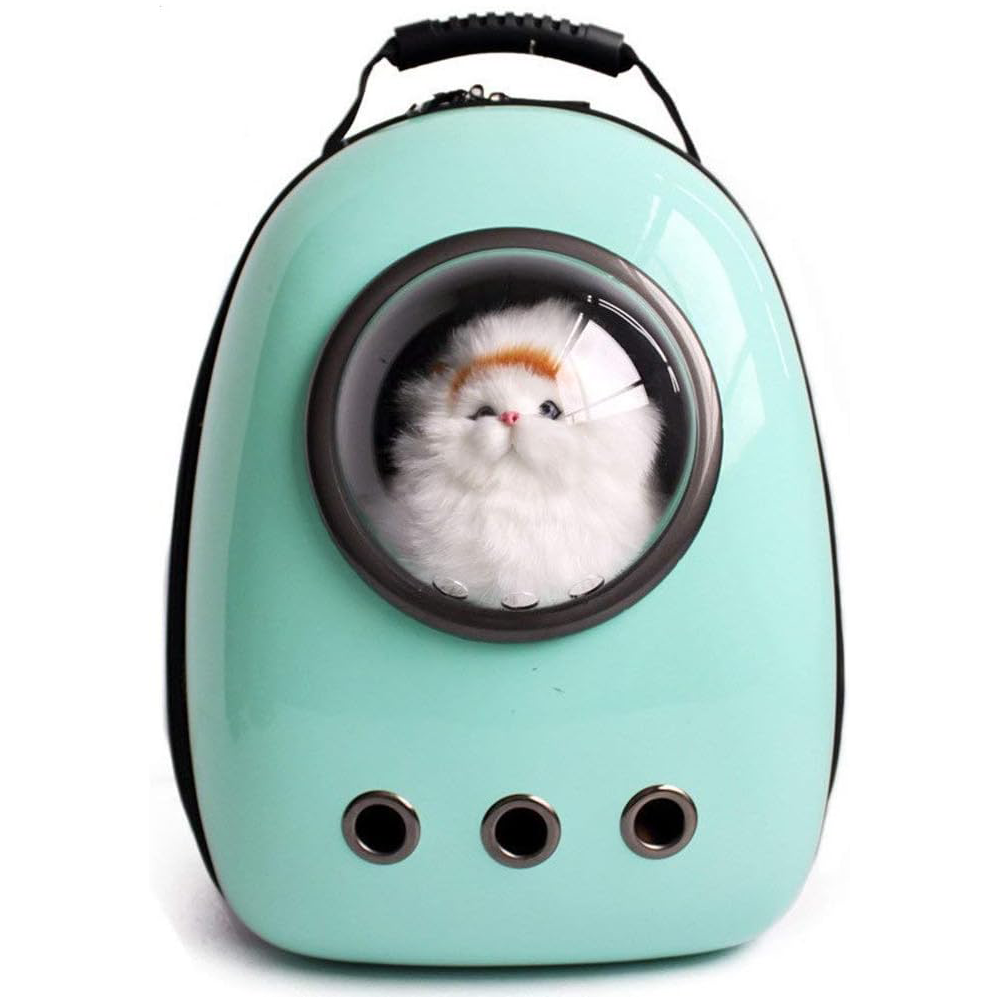
| Carrier type: | Backpack |
| Material: | Acrylic, Canvas |
| Dimensions: | 32 cm x 29 cm x 42 cm |
| Airline approved? | No |
The Lemonda Portable Pet Travel Carrier Space Capsule is a backpack carrier with shoulder straps. It is a space capsule design with a portable window at the back, enabling the occupant to see out of the carrier and watch what is going on.
The pack comes with a mesh cover and a semi-sphere transparent cover. The transparent cover has air holes to allow air in, but avoid taking your cat out in hot conditions because the inside of the bag will get hot quickly, and even the mesh cover won’t allow enough air in.
A velvet pad is included and sits on the carrier’s base to give a little extra padding, and it can be removed and washed. The Lemonda Portable Pet Travel Carrier Space Capsule is a somewhat quirky design that owners will either love or hate, but it is also a convenient backpack that makes it easy to carry your cat.
- Portal window lets your cat watch the outside world
- Backpack design is easy to carry
- Velvet pad offers a little extra cushioning on the base
- Quirky design that not all owners will like
- Expensive
4. DentJet Pet Travel Carrier – Best for Kittens
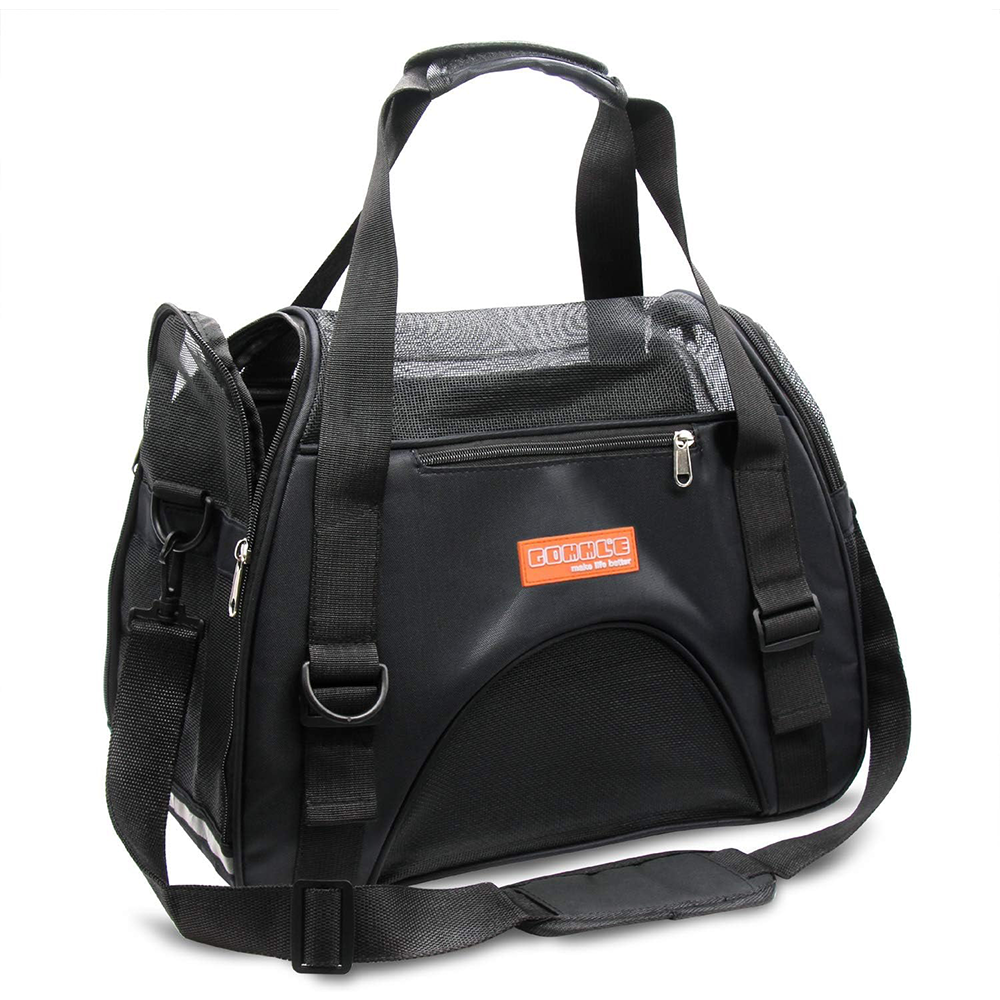
| Carrier type: | Bag |
| Material: | Oxford Cloth |
| Dimensions: | 44 cm x 32 cm x 6 cm |
| Airline approved? | Yes |
The DentJet Pet Travel Carrier is a small carrier bag with an adjustable shoulder strap and standard carry handles. It has a mesh top and front and can be opened at either of the panels. The manufacturer claims the bag is water resistant, and it comes with a detachable mat, which is easier to remove and clean than trying to clean the base of the bag when it gets dirty.
The bag also has an outer pocket, which can be used to carry small cat belongings or your personal belongings. The DentJet is a cheap pet travel carrier, but it is also very small, so while it is a budget-friendly option for kitten owners, it won’t be large enough for adult cats, and you will need to replace it over time.
- Lightweight design makes it easy to carry
- External pocket is convenient for storage
- Low price
- Very small
5. Petsfit Cat Carrier Large Expandable Cat Carrier
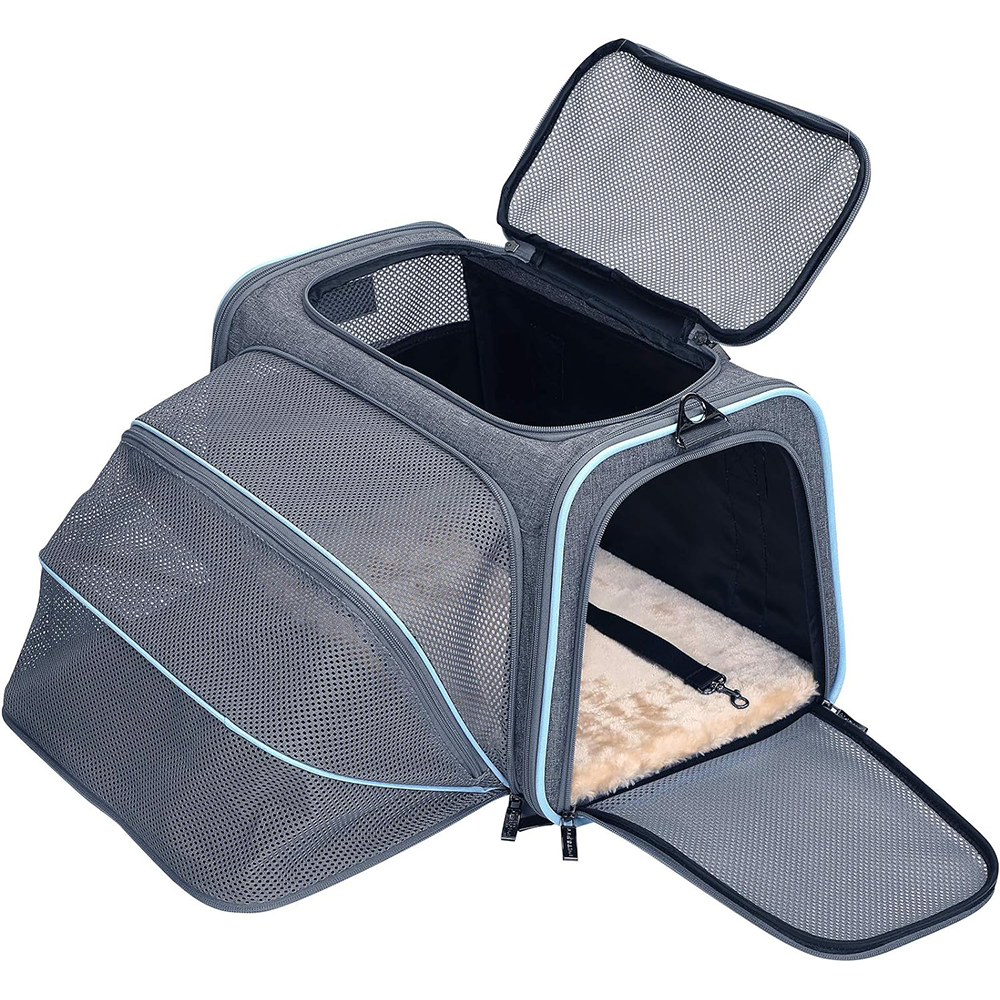
| Carrier type: | Expandable Bag |
| Material: | Melange Cloth, Fleece |
| Dimensions: | 46 cm x 30 cm x 30 cm |
| Airline approved? | Yes |
The Petsfit Cat Carrier Large Expandable Cat Carrier is a soft cat carrier bag made from melange cloth, which Petsfit claims is scratch-resistant and durable. The bag is big and sturdy enough to hold cats up to 8 pounds, but it won’t be suitable for large adult cats.
When closed, the carrier conforms to airline size requirements. One side of the bag can be folded out to provide more internal space when stationary, which is beneficial for holidays or when taking a break on a longer journey. A storage pocket can hold cat supplies or other items.
The Petsfit carrier is expensive, and considering the average adult cat weighs around 10 pounds, most owners will need the large carrier that costs more. As long as you buy the correct size for your cat, it is spacious enough, and the foldable side is a handy feature that provides even more comfort. It also comes with a removable plush mat.
- Airline-approved size
- Expandable side allows more freedom for your cat
- Removable plush mat is soft and comfortable
- Very expensive
6. Rosewood Vision Classic 60
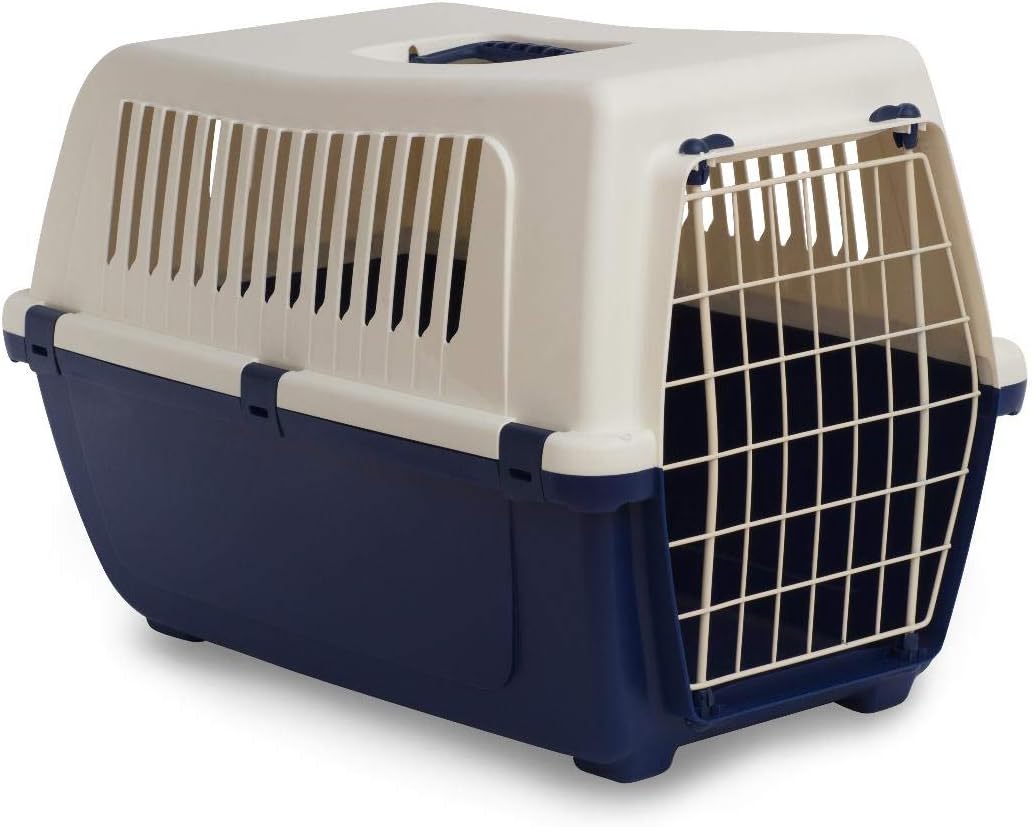
| Carrier type: | Hard |
| Material: | Plastic, Metal |
| Dimensions: | 38 cm x 58 cm x 41 cm |
| Airline approved? | No |
The Rosewood Vision Classic 60 is a traditional hard plastic cat carrier. It has a detachable top half and a detachable door that can open to the left or right. Slats down the sides and the doors provide adequate ventilation, and the rugged design of the carrier is usually preferred for cats that are resistant to carriers.
They won’t be able to force their way out easily, and it will be easier to help a cat into a carrier with rigid sides, like this one. The box is a good size, and because it’s made of rigid plastic, it can hold the weight of pretty much any adult cat.
It is also reasonably priced, but it is a little basic. You will need to provide a soft cushion, and the only means of carrying the Rosewood is by the single plastic handle on top of the box.
- Hard plastic box and metal doors are durable
- Slats on walls and door provide ventilation
- Affordable
- Single plastic carry handle can be uncomfortable
- Hard plastic base is uncomfortable for the cat
7. Siivton Pet Carrier With Expandable Sides
| Carrier type: | Expandable Bag |
| Material: | Oxford Cloth |
| Dimensions: | 45.7 cm x 28 cm x 28 cm |
| Airline approved? | Yes |
The Siivton Pet Carrier With Expandable Sides is an expandable soft carrier bag. Whereas the Petsfit expandable carrier above has one side that folds out, all sides of the Siivton, including the ends, can be expanded, providing significantly more room. However, the corners of the bag do not move, which prevents your cat from being able to stretch out.
While closed, the bag fits under airline seats, and it is airline-approved. When transporting your cat in the car or when camping, the bag can be folded out so there is even room for bowls and other items. The bag should house medium-sized cats, and it has four entry and exit points. It includes a comfortable shoulder strap and is reasonably priced.
Unfortunately, the material is flimsy, and a determined cat can scratch or chew through and escape. It is only suitable for lighter, calmer pets.
- All four sides expand to provide more room
- Airline-approved when closed
- Removable fleece base can be washed
- Bag is flimsy
- A determined cat may be able to chew through it
8. Pecute Cat Carrier Expandable Backpack
| Carrier type: | Expandable Backpack |
| Material: | Acrylic, Plush |
| Dimensions: | 34 cm x 27 cm x 44 cm |
| Airline approved? | No |
The Pecute Cat Carrier Expandable Backpack combines the benefits of a backpack carrier with an expandable section to give the cat more room when stationary. The backpack style is worn over the shoulders, which enables you to spread the weight of the carrier and the cat it contains across your chest and shoulders.
It even has a chest clip and waist strap to further spread the weight. It has a solid bottom, and the bag won’t collapse on your cat while being carried. The bag expands at the back and provides extra room when in the car or on the floor.
The Pecute bag is quite expensive, and because it is a backpack, it is somewhat limited in horizontal space, but it can be expanded when in the car and then contracted while carrying the cat on a walk.
- Rubber, non-slip feet
- Solid base prevents the carrier from collapsing in on your cat
- Backpack with extra straps makes it easy to distribute the weight
- Expensive
- Horizontal space is somewhat limited
9. Kaka Mall Pet Carrier
| Carrier type: | Bag |
| Material: | Oxford Fabric |
| Dimensions: | 41.5 cm x 20 cm x 29 cm |
| Airline approved? | Yes |
The Kaka Mall Pet Carrier is a soft carrier bag with padded, waterproof sides and includes a removable fleece mat for the internal base of the carrier. It has two convenient pockets to store items like collars or toys. You also get a padded, adjustable shoulder strap that makes carrying it easier. The bag is reasonably priced and benefits from the waterproof material.
However, it is small, with most adult cats struggling to fit comfortably within, and there is no support for the walls or the top of the carrier, which means that it folds in on the cat.
- Decent price
- Waterproof exterior
- Adjustable, padded shoulder strap
- Lack of structural support
- Too small for most adult cats
10. Trixie Bicycle Basket With Grille
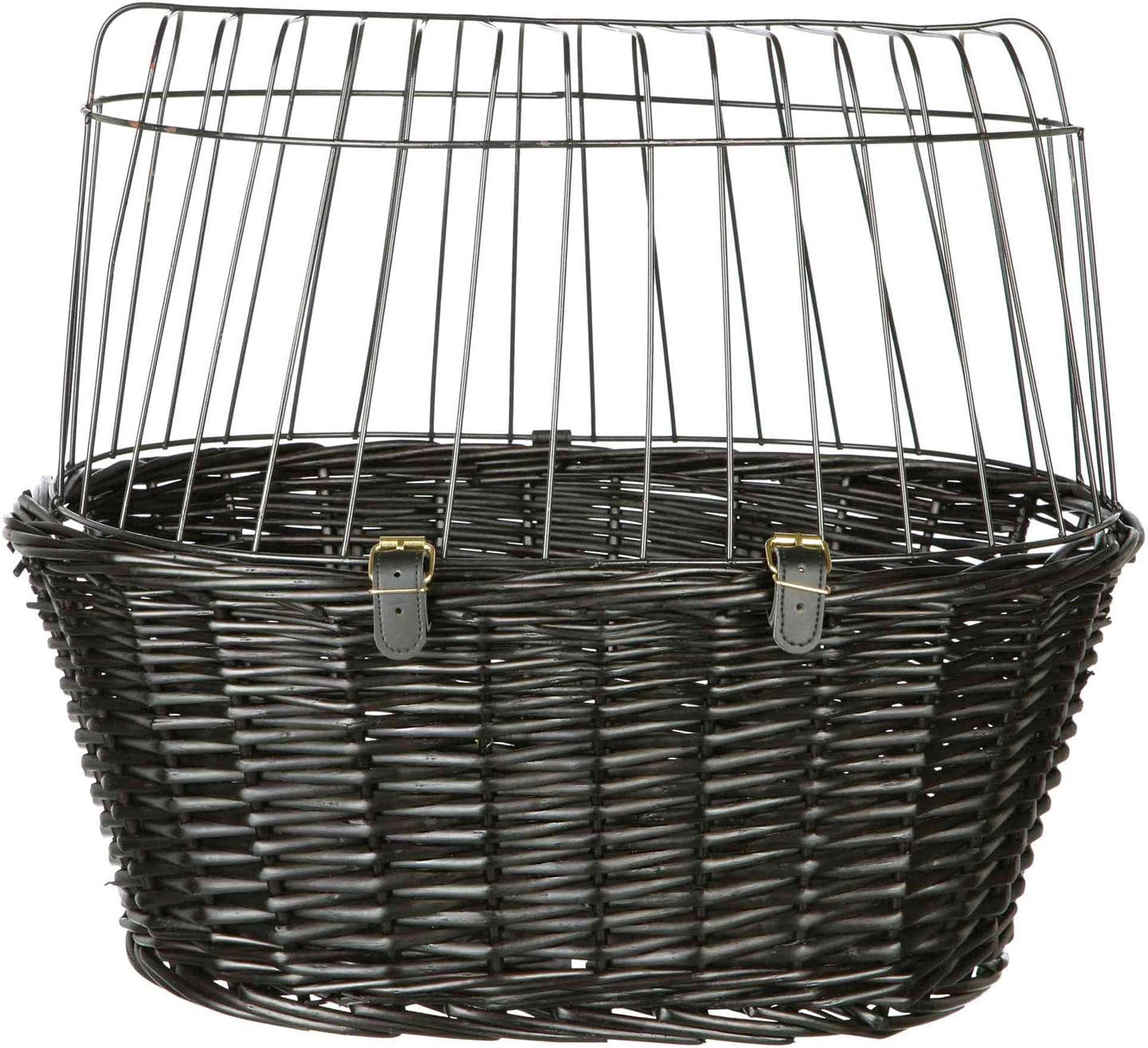
| Carrier type: | Bicycle Basket Carrier |
| Material: | Willow, Wire |
| Dimensions: | 50 cm x 35 cm x 41 cm |
| Airline approved? | No |
The Trixie Bicycle Basket With Grille is a willow basket that attaches to the handlebars of a bike and has a wire mesh that sits over the top of the basket to prevent your cat from getting out. The basket is not designed to be put on and taken off the bike regularly and attaches with bolts.
This ensures that the basket stays in place, but it is only suitable for cats that are comfortable being transported and that don’t pose a flight risk when being carried outdoors. Also, the basket won’t fit all bicycles and can catch on the brake levers if your bike isn’t suitable.
- Fits securely to the handlebars of some bikes
- Includes a comfortable cushion
- Can’t remove it from the bike
- Doesn’t fit all bike handlebars
- Not airline approved
 Buyer’s Guide: How to Find the Best Cat Carrier
Buyer’s Guide: How to Find the Best Cat Carrier
Most of the time, cats love confined spaces. However, it can be a different story when it comes time to transport your feline friend to the vet or on holiday. Getting them into a cat carrier can be a haze of claws and teeth.
If you’re lucky, you have a cat that enjoys, or at the very least tolerates, being put in and carried in such a device. But, in any case, you will need a carrier that they like that is spacious enough and can carry their weight.
Carrier Types
One of the first things to decide on is the carrier you need. Although there are some weird and wonderful designs that defy categorization, the main types of cat carriers are:
- Soft Bags: Typically made from polyester, Oxford cloth, or some other soft material, they look like normal bags except that they have mesh sides and typically open at the front and top to make it easy to put your cat in. They are softer and more comfortable than hard carry cases but are not as rigid. If your cat resists being put in the carrier, the soft walls will be a detriment and not a benefit. On the other hand, your feline friend may appreciate the softer surroundings, so you could find it easier to coax them inside.
- Hard Carriers: The hard carrier is the traditional cat carrier style. It is usually made from plastic and has a wire mesh door that can be removed or opened on one or both sides. The carry case is harder to scratch or chew through than a bag, and there is no danger of the sides folding in or collapsing on your cat during transit. However, you may want to invest in a cushion or rug to put on the bottom of the carrier because the hard plastic is uncomfortable.
- Backpacks: Backpacks are arguably the easiest carrier to carry. They have a double strap that goes over the shoulders, and some include straps and fastenings that go around the chest and belly. The weight of the carrier and the cat is spread out across the chest, shoulders, and back, so it puts less strain on the human. However, the horizontal space is limited, and backpacks are not usually suitable for large cats.
- Expandable Carrier: Expandable carriers are soft-style carriers with one or more walls or sections that can open up. They are designed to carry the cat when closed but can open up when in a car or placed on a solid surface. This provides extra room, and the design is usually preferred if you take your cat on long car journeys.
- Bicycle Baskets: Bicycle baskets allow you to cycle while transporting your cat. They should attach to the bike using bolts rather than straps, and you will have to carry the cat to the basket and not the basket to the cat. Baskets are only suitable for cats that won’t try to get away when being carried. You will also need to ensure that the basket fits your bike, and you will likely need to have a bicycle basket bracket because one may not be included.
Choosing the Size
Always ensure that you buy an appropriately sized basket. You can measure your cat and select a model that gives them a few inches in the front and behind. Also, check that the width of the basket is appropriate.
When the maximum weight capacity is available, your cat should fall below the range. However, don’t rely solely on weight capacity as a guide, and remember that there are no standard sizes. One company’s medium basket might be equivalent to another company’s small basket, and so on.
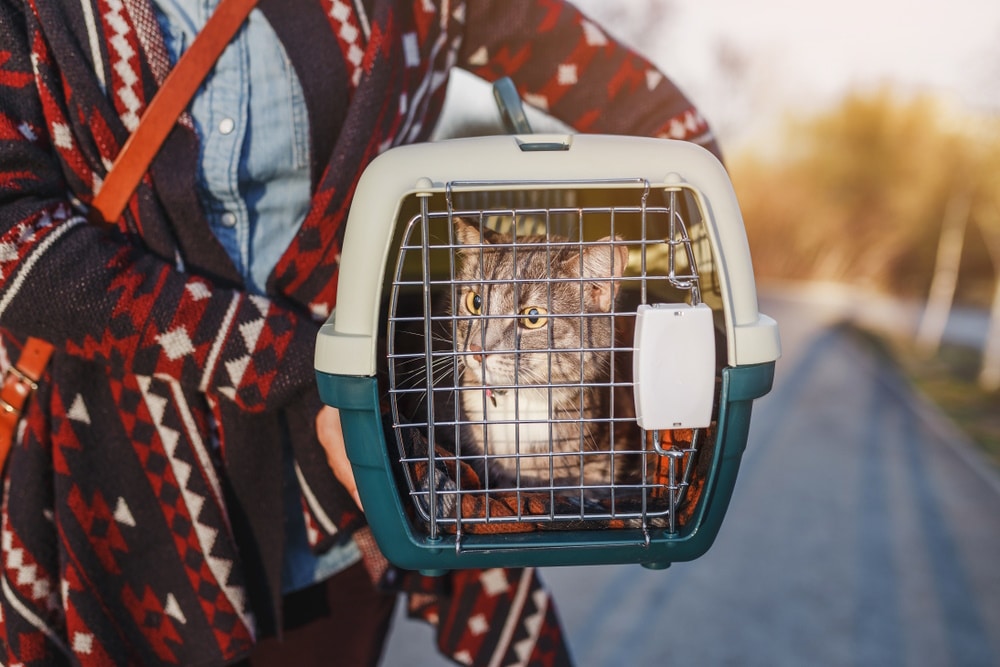
Airline Approved
Some baskets are described as airline-approved. Airlines typically require that a carrier be placed under the passenger seat. While it might be possible to move to a different seat with more room if your carrier is considered too large, the airline may refuse to let you fly, so always check paperwork and double-check with the airline before you take the risk.
Final Verdict
Cat carriers are essential equipment that makes it possible to transport our feline friends to the vet or take them on holiday with us. Although there are many designs, your cat will usually prefer a soft bag or a hard carrier. While writing the reviews above, we found the Morpilot Pet Carrier Bag to be the best overall cat carrier.
It is airline-approved, has an adjustable and padded shoulder strap, and includes a free travel bowl, but it is only big enough for smaller cats. The Amazon Basics Pet Carrier Bag is not only the best cat carrier in the UK for the money but is large enough for most adult cats and has a 16-pound maximum weight capacity, so it shouldn’t buckle under the pressure of your feline.
Featured Image Credit: Raoul Droog, Unsplash
Contents
- A Quick Glance at Our Favourites in 2024
- The 10 Best Cat Carriers in the UK
- 1. Morpilot Pet Carrier Bag – Best Overall
- 2. Amazon Basics Pet Carrier Bag– Best Value
- 3. Lemonda Portable Pet Travel Carrier Space Capsule – Premium Choice
- 4. DentJet Pet Travel Carrier – Best for Kittens
- 5. Petsfit Cat Carrier Large Expandable Cat Carrier
- 6. Rosewood Vision Classic 60
- 7. Siivton Pet Carrier With Expandable Sides
- 8. Pecute Cat Carrier Expandable Backpack
- 9. Kaka Mall Pet Carrier
- 10. Trixie Bicycle Basket With Grille
- Buyer’s Guide: How to Find the Best Cat Carrier
- Final Verdict


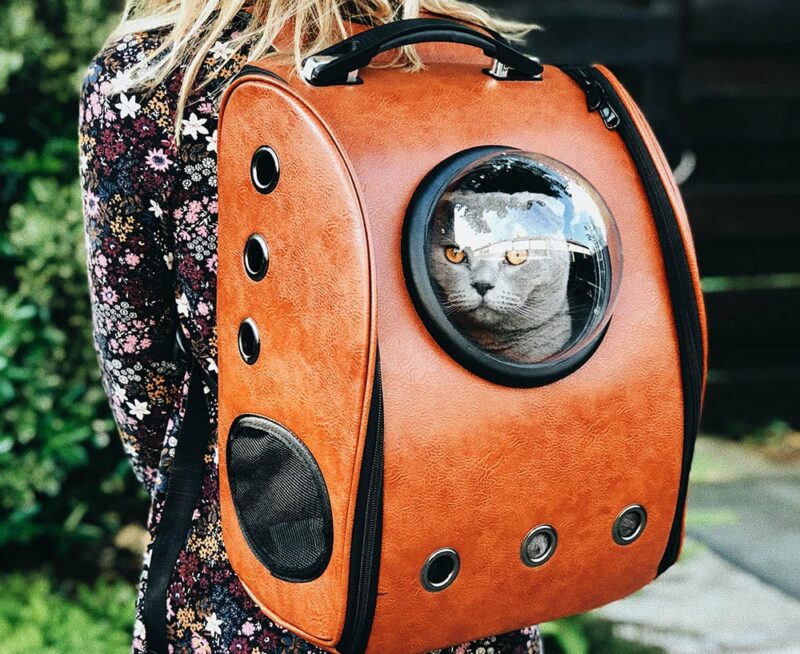




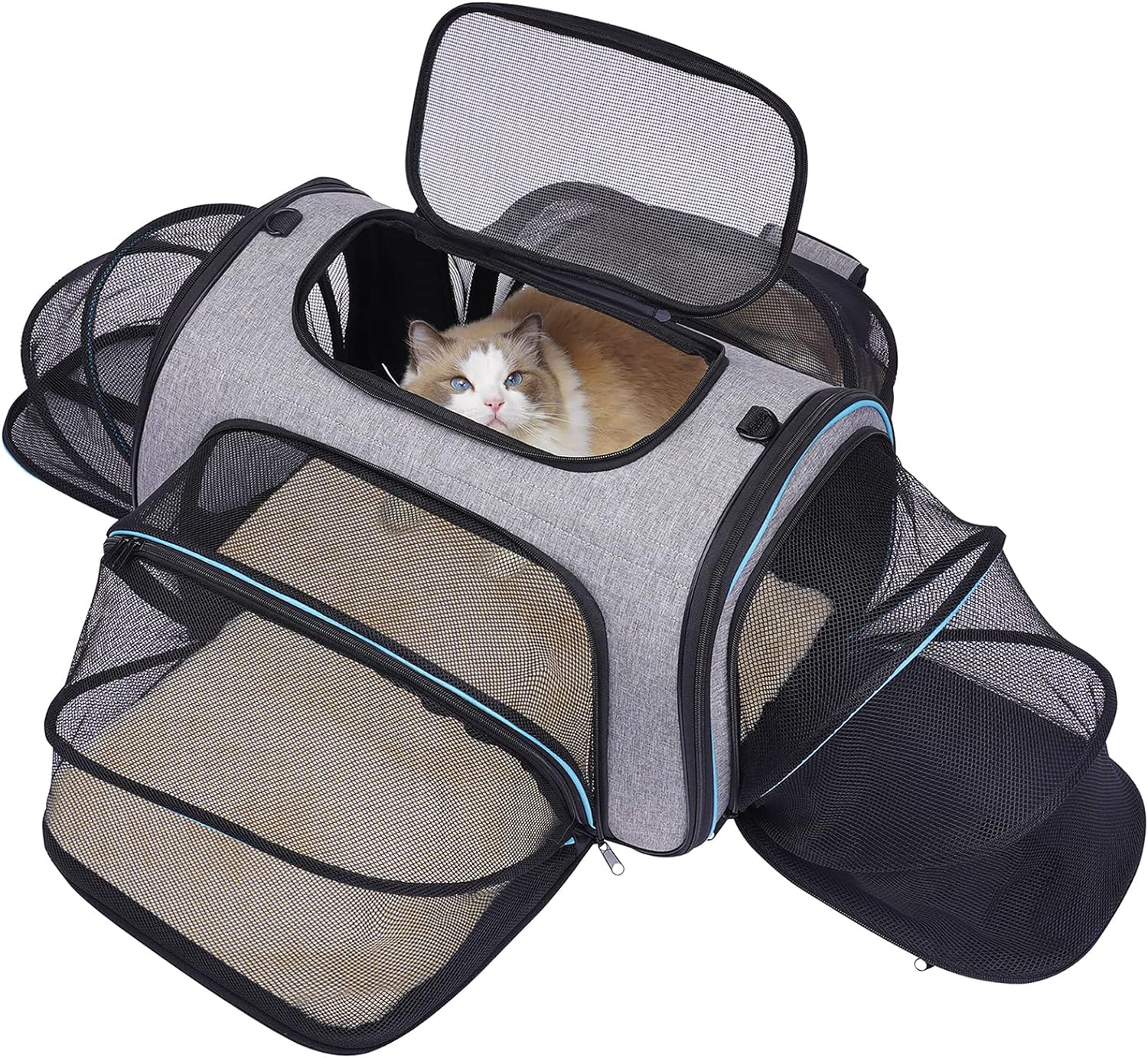

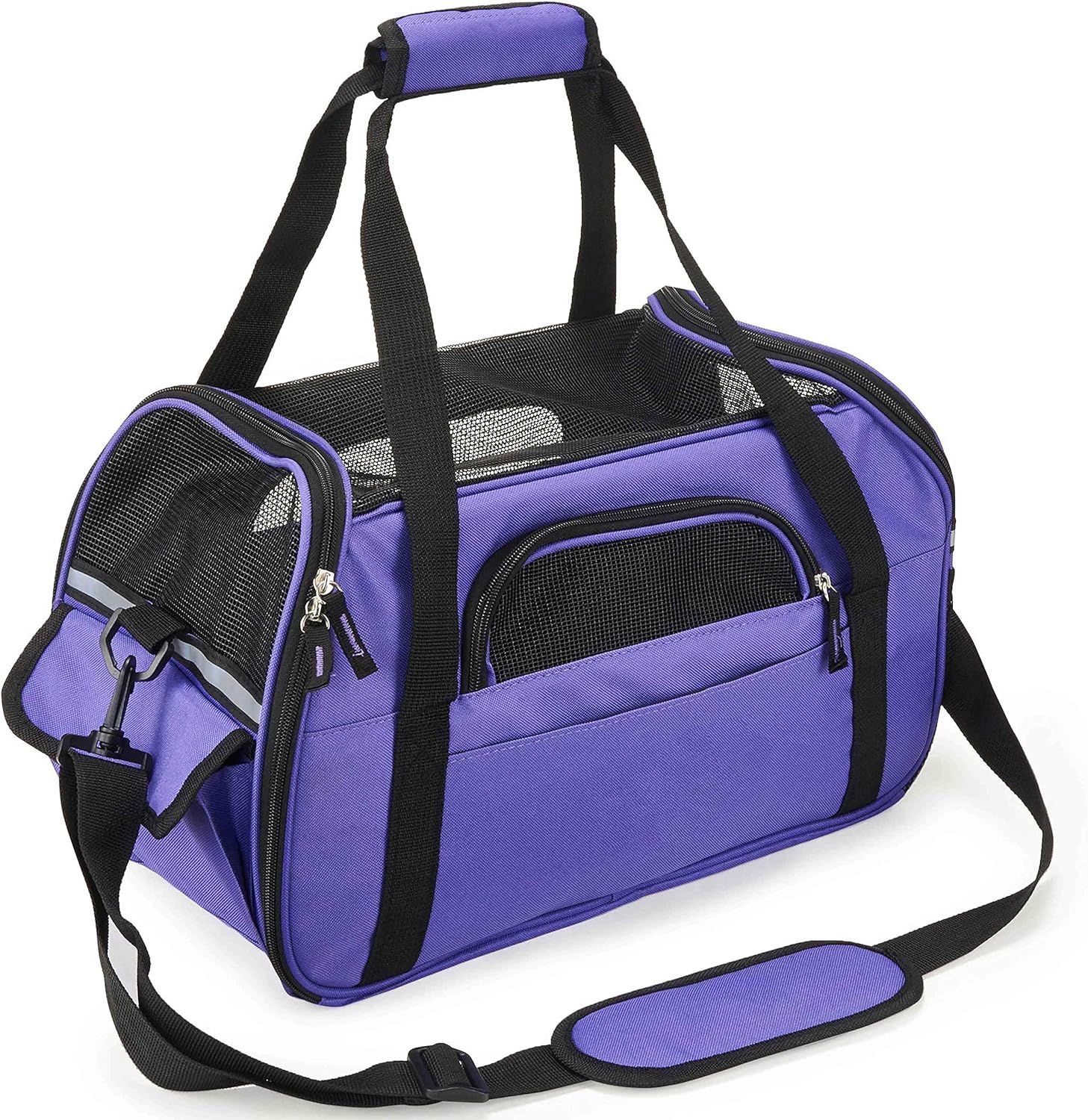
 Buyer’s Guide: How to Find the Best Cat Carrier
Buyer’s Guide: How to Find the Best Cat Carrier